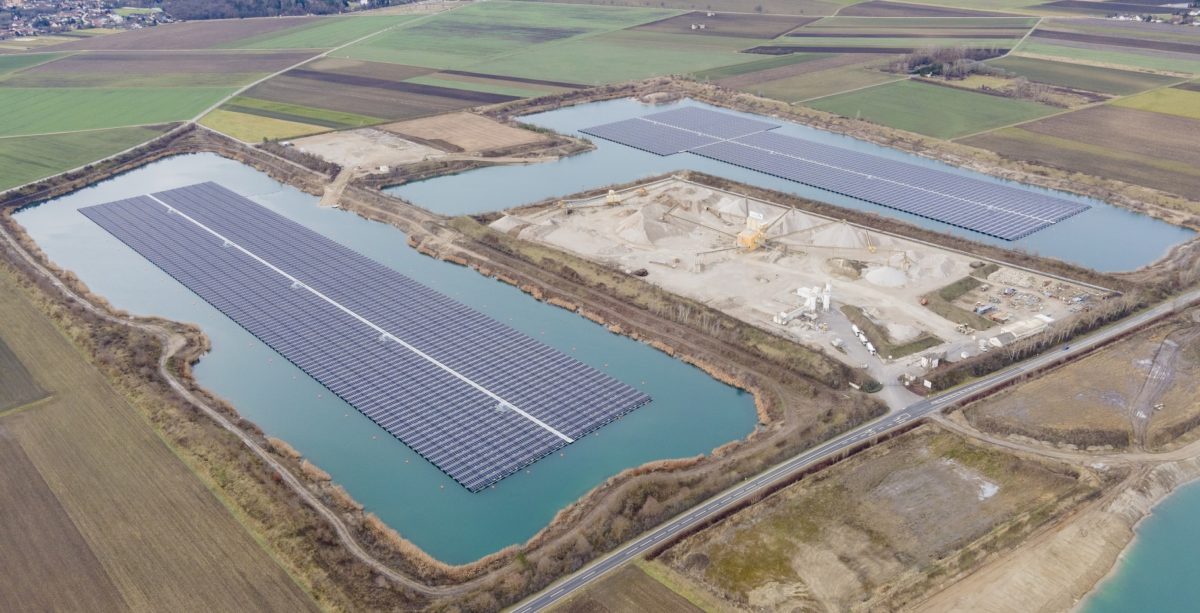ECOwind and EVN have completed a 24.5 MWp floating PV plant in Grafenwörth, Austria. They claim that the project – purportedly the largest of its kind in Central Europe – was delivered in record time, with the 45,304 east-west oriented solar modules installed in just 10 weeks.
“In Grafenwörth, the challenge was to drive approval procedures and regulations for this new PV application in Austria and to ensure a safe construction – which we managed even with a level difference of 7 meters between the mounting surface and the water,” said Johann Janker, managing director of ECOwind.
The floating PV system, which measures approximately 14 hectares, was built on the surface of two ponds at a former sand and gravel pit. The project features 158 inverters and 10 1,800 kVA floating transformers. It is expected to produce 26,700 MWh of green electricity per year – enough to supply power to around 7,500 Austrian households.
“Floating PV also has the benefit of a higher electricity yield thanks to the cooling effect of water – making the application a very attractive prospect to landowners of unused water bodies,” said Janker.
ECOwind said it will regularly carry out research on the fish population and local dragonfly fauna to ensure the project’s integration into the surrounding ecosystem.
Popular content
The project is purportedly the fourth-largest floating PV plant in Europe, along with three projects in the Netherlands – all built by BayWa re. Including the project in Grafenwörth, the group has installed a total of 15 floating PV projects, with more than 230 MW of capacity throughout the world.
IHS Markit says that 3.4 GW of floating PV capacity had been installed across the world by the end of 2021. It predicts that global floating PV demand will reach up to 14 GW by 2026. About 92% of those installations will likely be built in the Asia-Pacific region, driven by favorable policies and installation targets, says IHS Markit.
Floating PV is more expensive than ground-mounted solar installations, but other costs, such as O&M, tend to be lower. Depending on the site and technology, the output can be as much as 30% higher than a ground-mount PV plant, but further R&D innovation is seen as key for cost reductions and the continuous growth of floating solar.
This content is protected by copyright and may not be reused. If you want to cooperate with us and would like to reuse some of our content, please contact: editors@pv-magazine.com.



1 comment
By submitting this form you agree to pv magazine using your data for the purposes of publishing your comment.
Your personal data will only be disclosed or otherwise transmitted to third parties for the purposes of spam filtering or if this is necessary for technical maintenance of the website. Any other transfer to third parties will not take place unless this is justified on the basis of applicable data protection regulations or if pv magazine is legally obliged to do so.
You may revoke this consent at any time with effect for the future, in which case your personal data will be deleted immediately. Otherwise, your data will be deleted if pv magazine has processed your request or the purpose of data storage is fulfilled.
Further information on data privacy can be found in our Data Protection Policy.